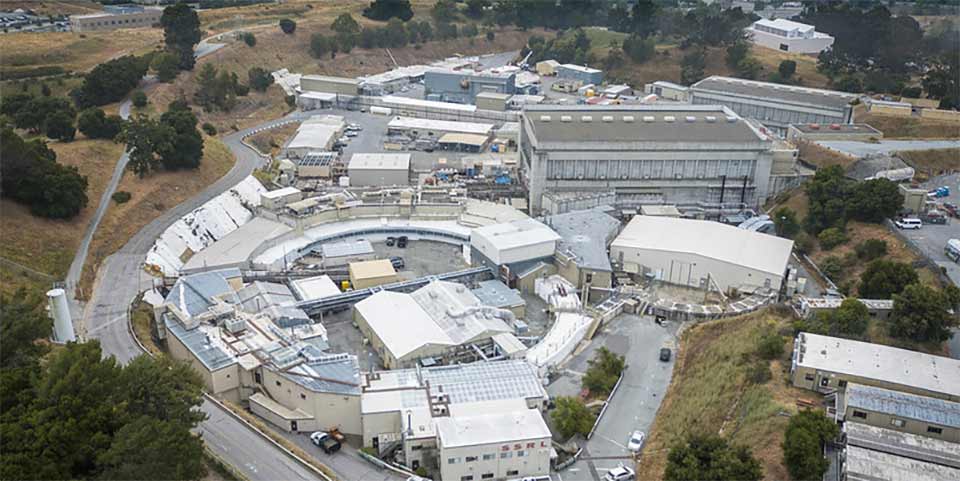Overview
Beam line 2-3 is a bending magnet side station dedicated to x-ray imaging and micro x-ray absorption spectroscopy (edge, EXAFS) as well as micro diffraction of biological, material, and geological samples. A set of SIGRAY axially symmetric mirror systems are used to achieve a microfocus with an option of a beam size of ~ 3 x 3 microns, or sub-micron spots. The energy range of the beam line optics covers 4.9-23 keV, with detection of fluorescent x-rays as low as Si. BL2-3 is equipped with a Vortex silicon drift detector and ionization chambers. Sample positions are controlled with sub-micron accuracy by two different sample stages depending on the experiment. A multisample holder is typically installed to rotate up to 6 different samples into the beam. BL2-3 is ideal for obtaining elemental maps of small samples (about 10 microns to 25 mm) as well as performing spectroscopy on selected points in the sample (~ 2 x 2 microns).
Status —
Beamline Parameters —
| Energy Range | Resolution ΔE/E | Spot Size | Flux | |
|---|---|---|---|---|
| Focused | 4900-23000 eV | ~5 x 10-4 | < 1 x 1 microns | ~1.5 x 109 |
Optics —
| Monochromator, SIGRAY Axially Symmetric Mirrors |
|---|
| Water cooled, double crystal, Si(111), Si(220), Si(400) Monochromator Crystal Glitch Library |
Source —
Instrumentation —
| Detectors | Ionization chambers, Vortex Silicon Drift Detector with Xpress3 |
|---|---|
| Sample Positioning | Newport Micro sample positioner with 6 position sample holder, SmarAct Piezo positioner for tomography. |
Sample Environment —
| Ambient temperature and pressure | LN2 Cryo-sample holder is in commissioning |
|---|---|
| Sample size | flexible, ~24 X 24 mm in one image, also can accommodate larger samples |
Absorption —
| 584 microns Be, 10.7 meters He, 15.2 microns C |
|---|

Publications
Publications
Highlights
Science Highlights
Beam Line 2-3 Science Highlights
Iron Heterogeneity in Early Active Multiple Sclerosis Lesions
Bioaccumulation Dynamics of Arsenate at the Base of Aquatic Food Webs
Multiscale Speciation of U and Pu at Chernobyl, Hanford, Los Alamos, McGuire AFB, Mayak, and Rocky Flats
Spectroscopic and Microspectroscopic Investigation of Arsenic Speciation and Distribution in Mine Wastes
The Ductility of Human Jaw Bone Attached to a Tooth
Using X-rays to Find an Evolutionary Step in the Origin of Oxygenic Photosynthesis
Water-Rock Reactions Produce Hydrogen Gas at Temperatures within the Limits of Life
Biotic-Abiotic Pathways: A New Paradigm for Uranium Reduction in Sediments
Watching Ions Hop in Superionic Nanomaterials
Imaging and Speciation of CeO2 and ZnO Nanoparticles in Soybean (Glycine max): Nanoparticle Transfer to the Food Chain
The Chemistry of Bromine in Terrestrial and Marine Environments
The Elements of Stroke
The Competition for Iron Impacts the Global Carbon Cycle
Localizing Organomercury Uptake and Accumulation in Zebrafish Larvae at the Tissue and Cellular Level
Microbial Life on the Seafloor: Where's the Energy?
Importance of Iron Speciation to Aerosol Solubility: Potential Effects of Aerosol Source on Ocean Photosynthesis
How were Lekythoi used in Ancient Greek Funeral Practices?
A Bacterium that can Grow by Using Arsenic Instead of Phosphorus
Synchrotron X-ray Analysis Demonstrate Phosphate-Bound Gadolinium in Skin in Nephrogenic Systemic Fibrosis
Techniques for Identifying and Mapping Iron Species in Geologic Samples
Subscribe to Beam Line 2-3 Science Highlights feed